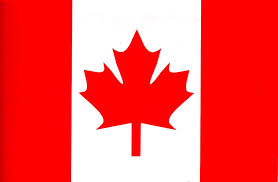Canada: A brief overview
Land and climate
Canada is the second largest country on earth and has three ocean borders:
the Pacific Ocean in the west;
the Atlantic Ocean in the east; and
the Arctic Ocean to the north.
Canada also borders the United States in the south and in the northwest.
Canada has many different types of landscape. There are areas with high mountains, different types of forests, prairie grasslands and arctic tundra where the ground is permanently frozen. Canada is also home to many rivers and lakes.
Seasons
In Canada, there are four different seasons: spring, summer, autumn (fall) and winter.
Summer lasts from around June to September and the weather varies from warm to hot, with daytime temperatures between 20 and 30 degrees Celsius or Centigrade (68 and 86 degrees Fahrenheit) or higher. In southern Ontario and Quebec, it can often be very humid.
Fall and spring are transition seasons, which mean the weather starts getting colder or warmer, and there is a lot of rain.
Winter is very cold in most places with temperatures often below zero degrees Celsius. Snow covers the ground from around December to March or April. In southwest British Columbia (around Victoria and Vancouver), rain is more common in winter than snow.
Depending on where you are immigrating from, you may be quite surprised by the cold and snow during your first Canadian winter. Be sure to buy a winter coat, boots, gloves and a hat to keep you warm. With the right clothing, you will be prepared to enjoy the unique beauty of a Canadian winter.
The Atlas of Canada has information on Canada’s geography and climate. You can also see the weather forecasts for every city and town in Canada.
Starting your life in Canada
Moving to Canada is an exciting opportunity. Find out how to get the help you need to settle in Canada and learn all about living in Canada.
Canada may be very different from your home country, which means there is a great deal to learn about and explore about Canada.
Languages
Canada has two official languages: English and French.
Universities and Colleges in Canada
There are two distinct types of post-secondary institutions in Canada: Universities and Colleges. Universities grant university degrees, which include bachelor’s degrees, master’s degrees, and doctoral degrees; and Colleges, also known as community colleges, provide diplomas. A community college is a type of educational institution. The term can have different meanings in different countries, but usually refers to an educational institution that provides tertiary education and continuing education supplemental to traditional Universities and Colleges.
Canada’s post-secondary opportunities revolve around a wide range of university options. Throughout Canada’s 13 provinces and territories, there are 98 universities to choose from. With a population of over 34 million as of 2012, 1.8 million are enrolled in a specific university. This averages out to 18 thousand students per university. Programs are offered to graduating high school students through choice, however, students must maintain specific entering averages, which generally range from 65-85%, depending on criteria set by the chosen university. On campus residences are available at 95% of universities in Canada. Most include a meal plan and general utilities. Residence is optional at all post-secondary campuses.
Degree programs last four years in addition to possible co-op opportunities and college affiliation for a hands-on approach to programs. Tuition is based on program material and content which varies in price. Generally, a first year student in an arts or science faculty will experience a broad range of courses while “program specific courses” begin in year two.
Economy
Canada’s economy has three main types of industries.
- Service: which includes jobs in:
- transportation
- education
- health care
- construction
- banking
- communications
- retail services
- tourism
- government
- Manufacturing: which makes products, such as:
- paper
- high technology equipment
- aerospace technology
- automobiles
- machinery
- food
- clothing
- many other goods
- Natural resources: which includes jobs in:
- forestry
- fishing
- agriculture
- mining
- energy
Cities, provinces and regions
Ottawa is the capital city of Canada and is located on the Ottawa River between Ontario and Quebec.
Canada has 10 provinces and three territories, each with its own capital city. These provinces and territories are grouped into five regions:
Atlantic Provinces: Newfoundland and Labrador, Prince Edward Island, Nova Scotia and New Brunswick
Central Canada: Quebec and Ontario
Prairie Provinces: Manitoba, Saskatchewan and Alberta
West Coast: British Columbia
North: Nunavut, Northwest Territories and Yukon Territory
Most people live in southern Ontario and Quebec, southwest British Columbia and Alberta. Much of the north has a very low population because of the cold climate.
Provincial Map of Canada



Recent Comments